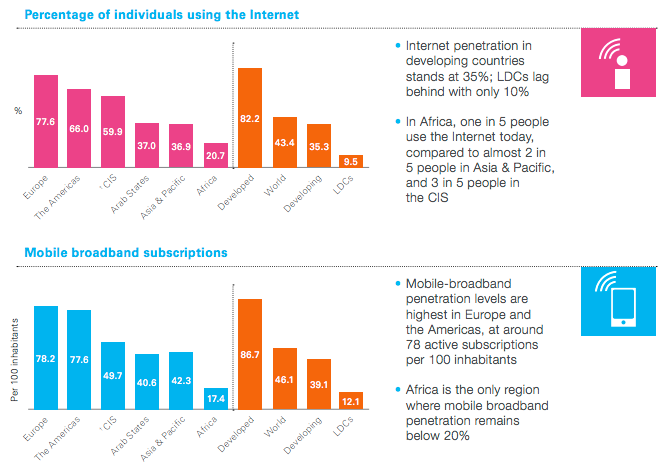GENCHI GENBUTSU........Uncommon Common Sense for Leadership in Africa
In the year 2000, Yuji Yokoya, the Chief engineer for the
2004 Sienna, was commissioned to understand the minivan market better, propose
ideas for building the 2004 Sienna, execute the ideas, and generally manage the
end-to-end process of producing and marketing the 2004 Sienna.
This was on the back of Toyota’s Archrival, Honda’s minivan,
Odyssey, outselling Sienna nearly two to one. Hitherto this moment, Toyota had
attempted to stamp their authority on the minivan market with their production
of the Previa and the smaller Sienna, attempts that proved futile.
As the proposed 2004 Sienna was proposed to be made for the
North American audience, Yokoya drove the existing smaller Sienna and
competitors’ minivans 53,000 miles through every state in the U.S., every
province in Canada and every state in Mexico. His goal: to understand the
problem and fix it.
Extreme as his approach may have seemed, its results led to an
unbeatable, industry revolutionizing product, that set the bar for what a
minivan should be.
Yuji Yokoya’s efforts can be summed up in one term: Genchi
Genbutsu: the approach of resolving problems and making decisions at the
closest place to the action so as to remain in-touch with operational
realities.
Another Japanese word, gemba, is allied to the
same concept. Gemba means “place”, the place (as it were)
where the action happens. Genchi genbutsu involves going to
the gemba to check on the genbutsu (the
relevant objects).
Masaaki Imai, a Japanese management writer who introduced
the West to the idea of kaizen, wrote a book called “Gemba Kaizen”.
This combined the concept of gradual improvement (kaizen) with an
on-the-spot presence (gemba)—being there in order to spot any
opportunity for improvement.
Imai says there are five golden rules of what he calls gemba
management:
1. When a problem arises, go to the gemba first—don't
try to make a diagnosis on the phone.
2. Check the genbutsu—the relevant
objects—because “seeing is believing”.
3. Take temporary counter-measures on the spot to
resolve the problem.
4. Then find the root cause of the problem.
5. Lastly, standardize procedures to avoid a
recurrence.
The beautiful thing about Genchi Genbutsu is its
multi-spherical applicability with regards to management and governance –
meaning that in every sphere and dimension of human endeavor, Genchi Genbutsu
is very applicable.
If there is any sphere or setting in Africa that needs
Genchi Genbutsu, it is leadership – that is, assuming the leaders are
corruption free, and have a genuine desire to serve and develop Africa and
Africans.
It is very common to hear African leaders announce policies
they intend to execute, but these policies are usually mostly strategically
flawed. This is because the decision is reached, devoid of the needed consumer
insight and on-the-spot problem appreciation that is needed to craft the
strategy in the first place.
In reality, Strategy should be crafted with an understanding
of the problem and the needed tactics.
I recall that, as Agency brand manager for Nigeria’s leading
beer brand, all the local and international research findings and reports,
which were expensive by the way, though really informative and insightful, the
insights that really drove our strategy, tactics and execution were those
derived from the consumers directly – at bars, hotels, markets, stores, concerts,
events, and wherever else our consumers congregated.
We never made a marketing communication decision based on
finding from commissioned research, except the finding aligned with our
personal observation and experiential knowledge.
If African Leaders must solve Africa’s problems, they might
need to borrow a leaf from the golden rules of gemba management,
which is really what Genchi Genbutsu is all about, by taking these five steps:
1. When a problem arises, go to the gemba first—don't
try to make a diagnosis on the phone.
African leaders should stop basing
their policies on rumours, hearsays, public opinion, and what the media (local
and international) is saying.
2. Check the genbutsu—the relevant
objects—because “seeing is believing”.
Genchi Genbutsu is also translated as “Get
out of the building” or “Go see for yourself” African leaders need to get out of their
presidential buildings, and go see for themselves what the masses are going
through.
3. Take temporary counter-measures on the spot to
resolve the problem.
Identifying the problem, talking about the
problem, having conferences about the problem, setting up panels and committees
would be an effort in futility if it is not genuinely aimed at resolving the
problem.
4. Then find the root cause of the problem.
When you chop off a blade of grass, it
grows back after some time. When you uproot it, it doesn’t grow back again.
Solving the problem is not enough. There is a need to find the root cause of
the problem.
5. Lastly, standardise procedures to avoid a
recurrence.
The case of roads being rebuilt
year in year out is a classic case of a problem for which there are no
standardized procedures to avoid a recurrence. African leaders need to
standardize procedures to avoid a recurrence of past problems.
If African leaders are looking for a policy play book,
Genchi Genbutsu is it.
They need to get off their high horse, roll up their
sleeves, and go to the pain-point, feel it, before they propose any solution.
Otherwise, they will always end up with white elephant projects that add no
value.





Comments